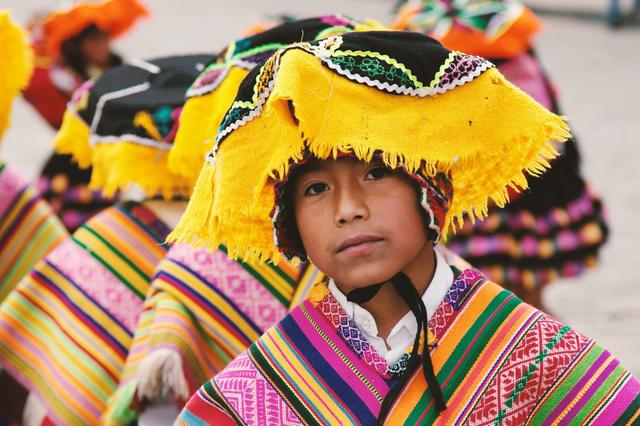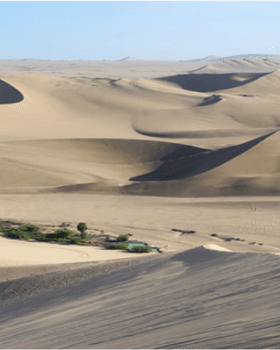

Choquequirao Trek
exploring the wonders of choquequiraoEmbarking on the Choquequirao trek is an unforgettable highlight to add to your Peru adventure. Often referred to as the “sister city” of Machu Picchu, Choquequirao offers visitors an equally astonishing experience—yet with a sense of serenity and discovery that sets it apart. Quieter and far less crowded than its more famous counterpart, this hidden gem rewards visitors with awe-inspiring views, ancient architecture, and peaceful solitude.
The History of Choquequirao, Peru
Choquequirao, meaning “Golden Cradle” in Quechua, is one of the most remarkable yet least-visited Inca sites in Peru. Perched high in the Vilcabamba mountain range, it is often called the “sister city” of Machu Picchu, though it covers an estimated 1,800 hectares — roughly three times larger. Much of the site remains buried beneath thick cloud forest vegetation, and ongoing excavations continue to reveal its magnitude.
Believed to have been constructed during the reign of the Inca Pachacuti Yupanqui in the 15th century, Choquequirao may have served as both a ceremonial center and a refuge for Inca royalty fleeing the Spanish conquest. Its remote location — accessible only by a challenging multi-day hike — likely helped preserve it from the destructive fate suffered by other Inca settlements.
Its stone structures and agricultural terraces mirror those at Machu Picchu, suggesting a shared architectural vision. However, Choquequirao stands apart in its scale, isolation, and the mystery surrounding its incomplete excavation. Scholars speculate it was a key administrative hub and religious site, strategically placed to control access to the Vilcabamba region.
The Spanish explorer Juan Arias Díaz is thought to have been the first non-Andean to document Choquequirao in 1710. Later, in the early 20th century, Hiram Bingham — the American historian who famously brought Machu Picchu to global attention — also visited the site, though he underestimated its importance. In recent decades, Peruvian archaeologists have uncovered new sectors, including ceremonial plazas, intricate irrigation systems, and terraces decorated with unique white stone llama figures. These discoveries have reinforced the view that Choquequirao’s cultural and spiritual significance rivals that of Machu Picchu.

Things to Do on the Choquequirao Trek
Upon arrival, visitors are rewarded with sweeping views of the Apurímac Canyon and the freedom to explore without the crowds that define Machu Picchu. Unlike its famous counterpart, Choquequirao has no timed entry slots, allowing you to wander at your own pace, sit quietly among the terraces, or simply breathe in the atmosphere of this sacred Inca site.
Many travelers choose to explore:
- The Main Plaza and Upper Plaza — ceremonial spaces thought to have hosted important rituals.
- Agricultural Terraces — many still in use today, showcasing advanced Inca farming techniques.
- The Llama Terraces — an intricate series of white stone figures embedded in the retaining walls.
- Water Temples and Fountains — dedicated to Andean deities, reflecting the Inca’s spiritual connection to water.

Choquequirao Peru Park Highlights
Situated 60 miles west of Cusco at 3,050 meters (10,010 feet) above sea level, Choquequirao clings to the southwestern spur of the snowcapped peak of Qoriwayrachina. It overlooks the roaring Apurímac River, which plunges nearly 1,450 meters below. Its remote position — accessible only on foot or by mule — adds to its sense of untouched grandeur.
Dense cloud forest surrounds the site, providing habitat for diverse flora and fauna. Visitors may spot orchids, bromeliads, spectacled bears, condors, and vibrant tanagers along the trek. The site’s architecture reflects the Incas’ mastery of stone masonry: walls of perfectly interlocked granite, trapezoidal doorways, and strategic alignments with celestial events.
Archaeological Site of Choquequirao Peru
Surrounded by jungle flora and fauna, Choquequirao’s structures are reminiscent of many of those found at Machu Picchu. It is dominated by a leveled hilltop known as Sunch’u Pata. Its buildings and walls feature the intricately interlocking stone architecture the Incas are famous for. Agricultural terracing, a method still used today throughout the Andes, is prominent at the site.
Temples, residences, and water systems are centered around two main plazas at the top of Sunch’u Pata. Other structures are thought to have served as workshops, kitchens, and storehouses. Two temple wak’a sites reached by steep descending steps were dedicated to water deities. Other structures include a Giant Staircase and several Inca observation posts (usnu.) An intriguing series of north-facing llamas set into the terraces is constructed from white calcocuarcita, a quartz and carbonate sandstone.

Choquequirao Trek Trail Overview
Unlike Machu Picchu, which can be reached by train and bus, Choquequirao demands commitment. The standard approach begins at the village of Capuliyoc, where the trail descends into the Apurímac Canyon before climbing steeply to the site. The journey typically takes 2–3 days each way, passing through dramatic Andean landscapes and microclimates.
Sheer drops, switchbacks, and challenging ascents test even seasoned trekkers. Yet the reward — standing in a nearly empty plaza framed by jungle-clad peaks — makes the effort unforgettable. While Machu Picchu saw close to one million visitors in 2023, Choquequirao welcomed fewer than 10,000. This solitude is a rare gift in the world of Inca archaeology.

Trekking Tips for the Choquequirao Trek
- Physical Preparation: The trek is demanding, with significant altitude changes and steep climbs. Training with cardio, leg strength, and endurance hikes will help.
- Acclimatization: Spend at least two days in Cusco or the Sacred Valley before starting to reduce the risk of altitude sickness.
- Gear: Waterproof layers, broken-in hiking boots, trekking poles, and a quality sleeping bag are essential.
- Pack Light: Mule support is common, but you’ll carry a daypack with water, snacks, and rain gear.
- Wildlife & Flora: Keep an eye out for orchids, giant hummingbirds, and the rare Andean spectacled bear.

Choquequirao Tours & Guided Options
1. Opt for a Lesser-Known Trek Instead of Machu Picchu
Choquequirao Trek — This classic 4-day, 3-night itinerary offers isolation, breathtaking scenery, and a full day to explore the ruins. Perfect for travelers seeking a quieter alternative to the Inca Trail.

2. Combine with a Machu Picchu Trek
Choquequirao to Machu Picchu Trek — A 7-day adventure linking two of the most significant Inca sites. The route first takes you to the complex, giving you a full day to explore its temples, shrines, and terraces. It then continues through cloud forests and mountain passes to Machu Picchu. This is an excellent option if you have the time, as it allows you to experience two monumental Inca sites.

Choquequirao Trek Itinerary: From Choquequirao to Machu Picchu
Duration: 7 days
Season: March – October
Group departures: Every last Monday
Minimum: 2 passengers | Maximum: 12 passengers
Day 1: Cusco – Capuliyoc – Chikisca
Visit Tarawasi and Sayhuite before beginning your descent into the Apurímac Canyon. Camp riverside at Chikisca.
Day 2: Chikisca – Marampata – Choquequirao
Cross the river and ascend to Marampata, with sweeping canyon views. Begin exploring Choquequirao’s terraces and main plaza.
Day 3: Choquequirao – Pinchiunuyoc
Full day dedicated to archaeological exploration before descending to the terraced site of Pinchiunuyoc.
Day 4: Pinchiunuyoc – Maizal
Hike through cloud forest to the Yuracmayo River, then ascend to Maizal for panoramic views of the Vilcabamba range.
Day 5: Maizal – Mina Victoria – Yanama
Pass the Inca and colonial mining site of Mina Victoria before crossing a 3,900m pass to Yanama.
Day 6: Yanama – Machu Picchu Pueblo
Drive or hike towards Machu Picchu Village, passing spectacular landscapes along the way.
Day 7: Machu Picchu – Cusco
Guided tour of Machu Picchu before returning by train and bus to Cusco.


Best Time to Do the Choquequirao Trek
The dry season (March–October) offers the most stable conditions, with warm days and cool nights.
Month-by-Month Overview:
- March–April: Lush landscapes post-rainy season, fewer trekkers.
- May–June: Peak clarity for mountain views, crisp mornings.
- July–August: High season — expect cooler nights but minimal rain.
- September–October: Warmer temperatures, wildflowers in bloom, lower crowds.
- November–February: Rainy season — trails can be slippery, but solitude is guaranteed.
Book Your Choquequirao to Machu Picchu Adventure
At Explorandes, we combine decades of trekking expertise with a deep commitment to sustainability and the local communities that make these journeys possible. Whether you choose the classic 4-day Choquequirao Trek or the epic 7-day Choquequirao to Machu Picchu route, you’ll walk in the footsteps of the Incas through landscapes few have the privilege to witness.
Start Planning Your Choquequirao Trek Today
Secure your spot, prepare for the adventure of a lifetime, and let us guide you from the Golden Cradle to the Lost City. Contact us today for more information.

March - December
5 days / 4 nights

April - October
12 days / 11 nights

April - December
5 days / 4 nights

April - October
6 days / 5 nights





